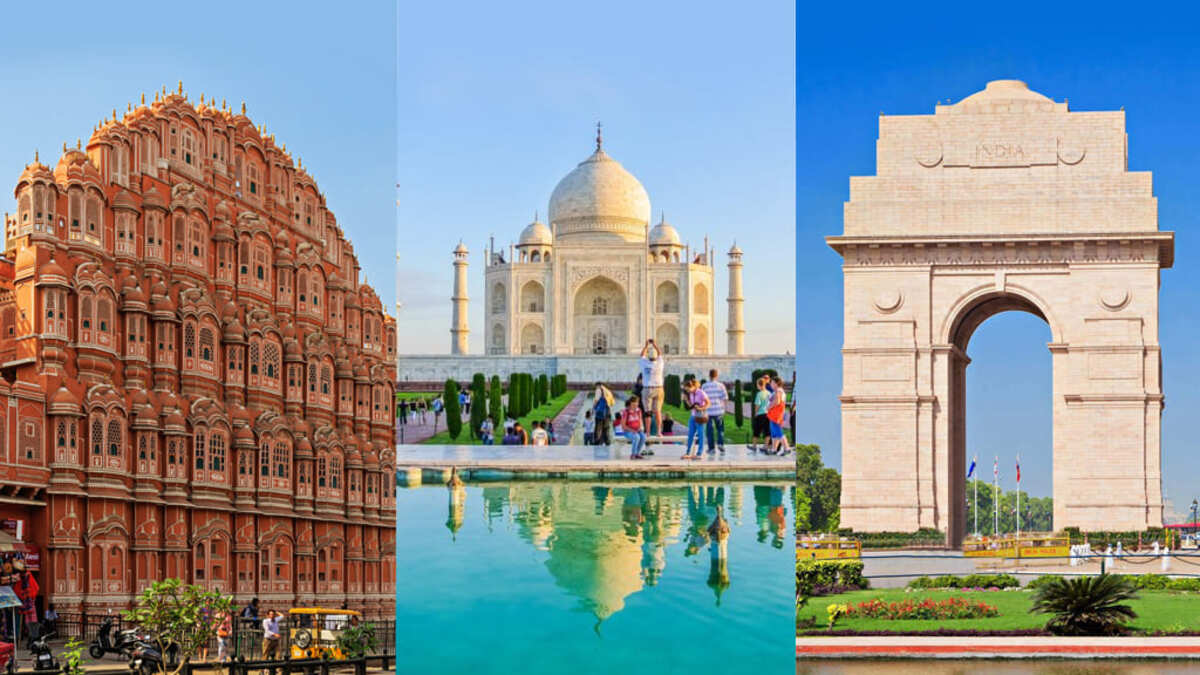
The Golden Triangle, encompassing Delhi, Jaipur, and Agra, is one of India’s iconic tourist circuits. At the heart of this triangle lies Agra, a city that breathes history and romance.
Known worldwide for its Mughal grandeur, Agra offers an enchanting journey into the past. From architectural wonders to stories of love and power, the city explores the Mughal legacy. Let’s embark on a historical tour of Agra and uncover its treasures.
Agra: A City of Timeless Splendor
Agra, located on the banks of the Yamuna River, was established as a significant center during the Mughal Empire.
Though its roots trace back to ancient times, the city rose to prominence under Mughal rulers, especially Emperor Akbar, who made it the capital of his empire in 1558.
Agra became a hub of art, culture, and architecture, reaching its zenith during the reign of Shah Jahan, the architect of the Taj Mahal.
The Taj Mahal: A Monument of Eternal Love
No visit to Agra is complete without witnessing the ethereal beauty of the Taj Mahal, one of the Seven Wonders of the World. Built by Shah Jahan in memory of his beloved wife Mumtaz Mahal, this white marble mausoleum is a symbol of eternal love.
The intricately carved marble inlay work, verses from the Quran inscribed on its walls, and the serene reflection in the Yamuna River create an unparalleled spectacle.
Visiting the Taj Mahal at sunrise is an experience like no other. The changing hues of the marble under the rising sun are a photographer’s dream and a sight to behold.
Agra Fort: A Bastion of Power
A short distance from the Taj Mahal lies the Agra Fort, a UNESCO World Heritage Site and a testament to Mughal military prowess and architectural innovation.
Originally a brick fort built by the Lodis, it was transformed into a sprawling red sandstone structure by Akbar.
The fort is not just a military stronghold but also a palace complex.
Within its walls, you’ll find the Jahangir Palace, Khas Mahal, and Diwan-i-Khas, each reflecting the artistic brilliance of the Mughal era. Standing on the fort’s ramparts, one can catch a distant view of the Taj Mahal, a poignant reminder of Shah Jahan’s final days as a prisoner here.
Fatehpur Sikri: The Abandoned Capital
Located about 40 kilometers from Agra, Fatehpur Sikri is a ghost town that narrates tales of Mughal ambition and foresight.
Built by Akbar as his capital, it was abandoned after just 15 years due to water scarcity. Despite its short-lived glory, the city remains an architectural masterpiece.
Highlights of Fatehpur Sikri include the Buland Darwaza, the tallest gateway in the world, and the Jama Masjid, a stunning mosque that still attracts pilgrims.
The Panch Mahal, a five-story palace, and the Diwan-i-Khas, a hall with an intricately carved central pillar, showcase the blend of Hindu and Islamic architectural styles.
Itimad-ud-Daulah: The Jewel Box
Often referred to as the Baby Taj, the Tomb of Itimad-ud-Daulah is a precursor to the Taj Mahal in terms of design and craftsmanship.
Built by Nur Jahan, wife of Emperor Jahangir, for her father, this tomb is the first Mughal structure made entirely of marble. Its delicate inlay work and intricate lattice screens make it a gem of Mughal artistry.
Mehtab Bagh: A Serene Escape
For a different perspective of the Taj Mahal, head to Mehtab Bagh, a lush garden located on the opposite bank of the Yamuna River. This garden offers a tranquil escape and a perfect spot for photography, especially at sunset. Legend has it that Shah Jahan envisioned building a black marble Taj Mahal here as his tomb, though the plan never materialized.
Local Flavors and Souvenirs
Agra is not just about history; it’s also a vibrant hub of culture and cuisine. Savor the city’s famous petha, a soft, translucent sweet made from ash gourd, and relish Mughlai dishes like kebabs, biryanis, and kormas.
For souvenirs, explore the bustling markets of Kinari Bazaar and Sadar Bazaar, where you can find marble artifacts, leather goods, and handcrafted jewelry that reflect the city’s rich heritage.
Planning Your Visit
Agra is well-connected by road, rail, and air, making it an integral part of the Golden Triangle.
While a day trip from Delhi is possible, spending at least two days allows you to fully immerse yourself in its charm. Choose comfortable accommodations near the Taj Mahal for easy access to the city’s attractions.
Learn More About Golden Triangle 2 Days Trip.
Conclusion
Agra, with its Mughal grandeur and timeless monuments, offers a journey into a bygone era of splendor and romance.
As you walk through its historic sites, you’ll not only witness architectural brilliance but also hear echoes of stories that shaped India’s history.
Whether you’re marveling at the Taj Mahal or wandering the ruins of Fatehpur Sikri, Agra promises an unforgettable experience in the heart of the Golden Triangle.






Leave a Reply